A curious reversal: I'm discussing Oscar-voting with costume designer Michael O'Connor, an Oscar winner for The Duchess (2008) nominated again for his work on the Dickensian romantic drama The Invisible Woman and he reveals that, though he takes voting seriously, he doesn't really think it's a good thing to know too much about the behind the scenes achievements on movies, beyond what you can see and judge visually.
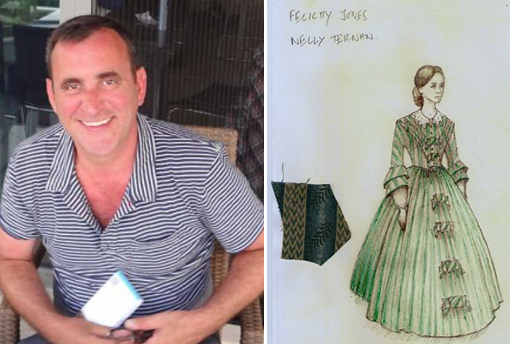 Michael O'Connor and one of his Oscar-nominated designs from The Invisible Woman
Michael O'Connor and one of his Oscar-nominated designs from The Invisible Woman
That’s why I don’t teach or do classes. I don't think it would be a good experience. I want the discussion when I’m doing it because it helps me work but when you watch [a movie] you shouldn’t know the discussions. When you watch a film sometimes and stay for the Q&A it’s changed the experience because now you know some of the secrets. Some of the magic is not knowing.
And, yet, once you get Michael O'Connor talking about his craft, he doesn't quit (a wonderful problem in an interview) and his passion for Costume Design is always front and center. I'm not at all convinced that he wouldn't make a good teacher but his students would have to be quick, as he leaps from topic to topic, sometimes without warning.
From our vantage point in 2014 his current status as an Oscar winning costume designer seems inevitable...
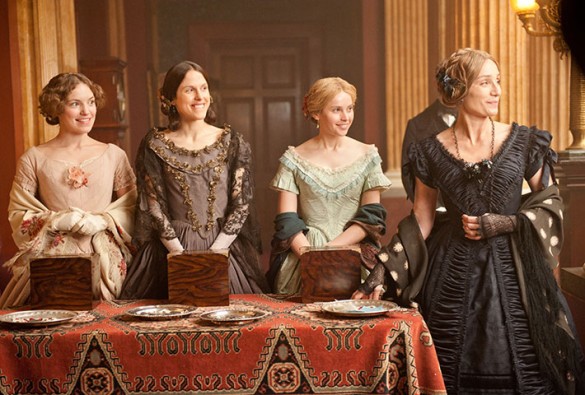
Consider if you will that four of his first six movies, assisting four different famous designers no less (Emmawith Ruth Myers, Topsy Turvy with Lindy Hemmings, Oscar & Lucinda with Janet Patterson, and Quills with Jacqueline West), were all Oscar blessed. He cites Oscar & Lucinda (his first of three films with Ralph Fiennes) and Topsy Turvy as particularly educational and we dwell for a moment on the latter. I ask him how the Mike Leigh film could possibly look as $100 million astonishing as it does on what must have been the teensiest of budgets given the filmmaker and subject matter. "In those days I wasn't privvy to that information," he says, preserving the magic.
Those days are of course over. He's long established himself as a major costume designer with a filmography that now includes a wide array of styles and time periods from Uganda in the 70s (The Last King of Scotland) to frothy 40s era musical comedy (Miss Pettigrew Lives for a Day), 18th century aristocracy (The Duchess (Oscar win), a sword and sandals adventure (The Eagle) and recently Jane Eyre (Oscar nomination), a sci-fi curveball Dredd (2012) and The Invisible Woman (2013).
Herewith, a few highlights from our long conversation...
NATHANIEL: Can we talk about Jane Eyre? When you're working on a film like that do you know the weight your work is going to take on onscreen? I mean the costumes are such a focal point of some pretty amazing shots.
MICHAEL O' CONNOR: No, I don’t know that you can tell, really. I don't know if you can tell what will work, even when you read the script. I remember seeing Drive [Costumed by Erin Benach] and thinking 'this film is amazing'. I really loved the film, the way it looked, the way it was acted. But, god, if I saw that as a script — I think it’s six pages long or something?!
How do you know what it is when you're working on a film? The light is artificial and you don’t know what exactly is being done. You can’t be there to see every filter and lens. I’m worrying about texture and patterns and color and how they work against backgrounds and what they say about someone’s character and whether you heighten it a bit.
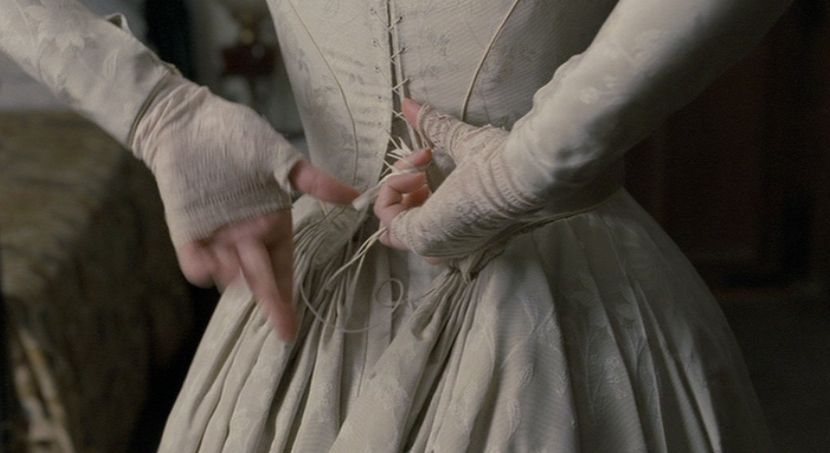
So where do you even begin?
With Jane Eyre, I didn’t know Mia and I didn’t know Cary [Fukunaga]. So I'm thinking about Jane Eyre and that period. There’s a strong fighting woman within her. She's not scared to speak her mind and she doesn’t have much money so there’s something simple and practical about her. It didn’t have to be completely fussy period exactly, but it had to be clean, it had to be sure. So that’s what I did.
It's just an exquisite looking movie.
Cary would say 'It would be great to have one of Jane's costumes reflect the architecture of the place she’s in'. So I looked at the buildings until I saw all these crossed windows, these Jacobean windows with their sort of dialogue crosses and things and I thought that would be great. So then I thought of the practicalities 'If that was a tartan on linen that looked like the window...' so the dress was made like that. There was a tightness to the clothes, a repression.
All of those thoughts in my head are going in... but in terms of whether it comes out? I don’t think you ever know, really. You can do the most wonderful costumes you like but if other elements on the film aren’t working, they aren’t working. And in all honesty you can be bad in the costume department and the film can be fantastic. Films are many sums of parts.
 Felicity Jones as the title character, Dicken's mistress, in The Invisible WomanSo true. The Invisible Woman is sort of an about face from Jane Eyre. It's very fussy... all the stuff around their faces!
Felicity Jones as the title character, Dicken's mistress, in The Invisible WomanSo true. The Invisible Woman is sort of an about face from Jane Eyre. It's very fussy... all the stuff around their faces!
Yes, because it’s Dickensian. If you read Dickens and you read biographies and see photographs of the women in his life from his daughters and his sister-in-law and Nelly and her mother and the actresses of the time -- it's the 1850s, the fussiest time in the Victorian era! When you see Nelly older, she's less fussed because it's a different period. But to tell the truth about the story you've got to take enough elements about the period. I'm part of creating the world. You kind of think, 'GOD, can someone have that much lace on a costume... is it possible?' The originals -- you see all these things in their hair and ribbons. But sometimes you think 'In this moment, it's best not to have it. It’s best to have a simple bonnet' like when she's walking with Dickens.
But when she’s [celebrating her] birthday and they drag her off to the Collins' house... you look at the paintings of these people and you think, my god, the detail and the work in these things is incredible. But if you take out the fuss you’d say: 'What is the time setting of this film?'
Right.
And how can you represent [the time setting]? The building, the tablecloths, the knives and forks from that date. To sense the reality, to smell the reality, you want to have the elements, the fuss and the crinoline -- crinoline is big in the 1850s. Nelly starts off in small crinolines and then she ends up in larger crinolines and even that is a natural progression. People at the time hoped the fashion would leave but it stayed because it was great for women. The women loved crinoline. It was light and it made their clothes look bigger. It was the only way, somehow, they expressed themselves before they were properly emancipated.
Society and costumes... I think it’s good to represent it in films. What Dickens did was observed society and commented on society and I wanted our film to be, what would you say, a sort of piece of that time. Dickens liked women like girls in little florals and with flowers in their hair and pale colors. I wanted, when he saw Nelly, to see that that was the kind of girl he liked, like the girl in his novels.
Nathaniel: I hadn't seen the film in some time before we spoke and I was just looking at some images again and reminded how very floral it is.
 Michael O'Connor won the Oscar for his elaborate work on "The Duchess"
Michael O'Connor won the Oscar for his elaborate work on "The Duchess"
MICHAEL O'CONNOR: There’s even more in The Duchess! One of the ways to emphasize the fashion for that was the idea that she would have large fashion feathers in her hair or flowers and no one else would apart from her. So they would run out and copy her the next day, studying Georgiana.
[Jumping back to The Invisible Woman...] It was quite strange when I looked at some of the possibilities and options of fashion, some of the curious things people had. My god... [Laughter] They were very clever people, the Victorians. It’s interesting to look at the way they balanced shapes with other shapes. A skirt or hoop that is that big has to have something on the top half to balance the bottom half. Otherwise it doesn’t work as an overall form.
Which character in the new film did you find it hardest to capture?
The principle actress is the hardest. It’s a difficult thing to find this young girl [Nelly, played by Felicity Jones], who is talking intelligently and is interesting in acting, Dickens, and reading. It was hard to make her not too obviously pretty but at the same time not to make her too mouse-like.
A balancing act.
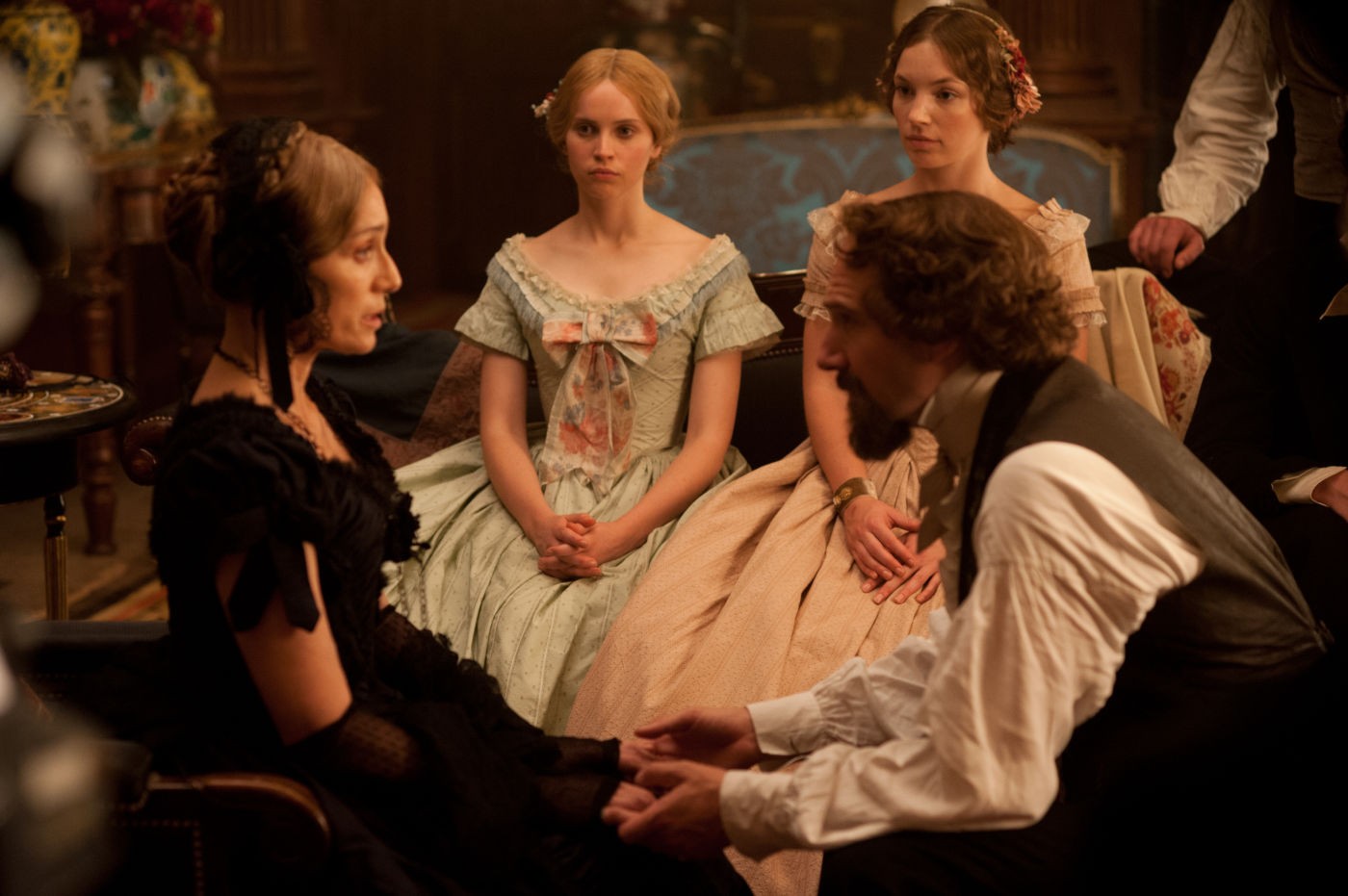 A family of actresses befriends Charles Dickens in "The Invisible Woman"
A family of actresses befriends Charles Dickens in "The Invisible Woman"
You know, you could be really dull and put her in sort of dirty old cottons? No. Lets start her off gray and floral and then when she gets a chance in the evening it’s her best dress. Let’s make that a little pale green so that Dickens sees it. Use the right amount of trim, not too much fuss. You slowly take her up the decade. And just when you feel that, timewise, you’re getting into your stride with the characters, the scene cuts and goes to the future six years. You think ‘God, that was kind of complicated.’
I went to the Museum of London and looked at people’s bonnets and you think ‘this truly is what they wore?' There it is in the photograph! Ralph wanted authenticity but would be shocked at the size of the bowties. So, I would show him the photograph of an actor or author in 1857. Ralph's quote was "Let's embrace it. Let's be there."
Do you ever get actors who aren’t comfortable in what you’re assigning them?
Yeah, you know, it's a long process to get them comfortable. I’m the first person that they see beyond the director. There are no sets. They read the script and they come to you. Mia in Jane Eyre and Felicity, they had experiences before so when you put [the costumes] on they say 'I don't remember it feeling like this when I had a corset before' so you go 'let's look at the real thing, how it is'. You look at the shapes of the things, brooches, and jewelry. Felicity had a lot to say and had the reference of the real person. You say 'This is how this is, the number of petticoats under the skirt.' Once they put it on it’s quite strange, they start moving around in a different way. The shape of the shoes.
[Acting out a conversation] 'Why are the shoes so pointy?' 'Imagine you have a skirt so wide and you want to stick your toe out and show your shoe, than it wants to be a bit longer than average. That's the point of it.'
All that sort of stuff is part of the fun of doing it, building this thing and having the relationship with the actor. You can say 'This is what I'm thinking for this' and of course you know what the other person in the scene is wearing. After a while they start to trust you. They know you're thinking on their behalf and you’re trying to make them look as good and as right as possible. Obviously their take on it is important, too, because they have to behave in it.
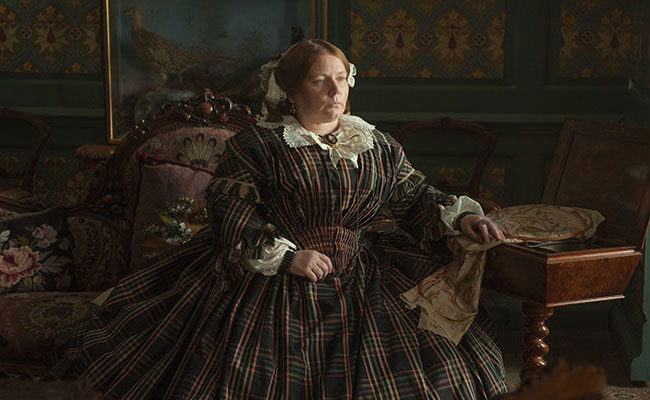
Nathaniel R: I spoke with Joanna Scanlan recently. Loved her in this.
MICHAEL O'CONNOR: She’s not in it a great deal. If you look at the real pictures of Catherine Dickens it could have been a lot more extreme -- she has a certain wealth. When she travels out she wants to be proud; she’s got to wear a bonnet with trims and flowers.
I didn't want to make her sad. [As if to Joanna, proudly] 'You'll do that with your acting. You are Mrs Dickens. And he is the most famous man in Britain. And you are out!' I had great fun with Joanna.
Your next project is Suite Francaise with Kristin Scott Thomas again. It's like a "who's who" of hot actors: Michelle Williams, Matthias Schoenaerts, Tom Schilling...
The wonderful Tom Schilling!
How are you finding that experience?
That’s finished now. Michelle Williams is a fantastic lady. To be honest that’s why -- it's a fantastic book and I love that period, the 1940s. It's great for what Hollywood was and fashion and everything. There were other options to do other films but they named the cast "these people are in place and ready". Kristin, who I knew, is fantastic and Michelle who I was a big fan of from My Week With Marilyn. I thought 'I'm going with this because I believe in this story and I believe in this cast.'
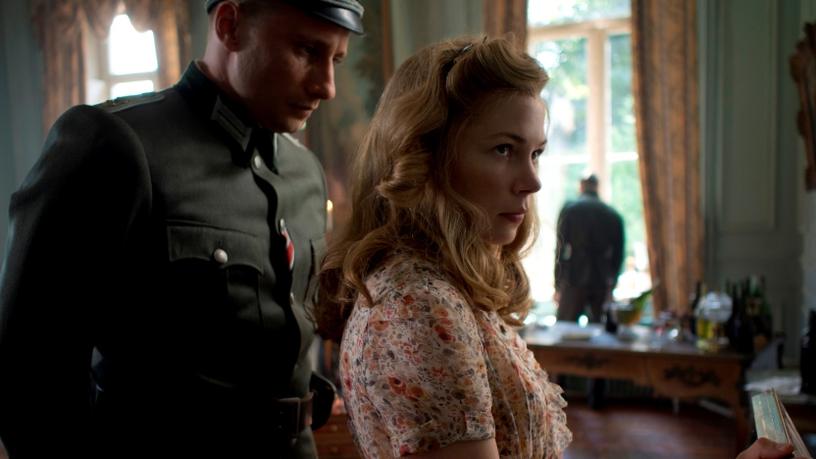 Matthias and Michelle in wartorn France in Suite Française (2014)
Matthias and Michelle in wartorn France in Suite Française (2014)
Can't wait to see it.
But this is a village in France - it's not a 1940s musical. And it's wartime, so you only have to do certain things for that kind of film.
I know but that cast list is a "wow". And Margot Robbie...
Margot is playing a local peasant’s farmer’s daughter with no money at all. She can't even afford a pair of stockings, so you can’t go wild!
So it’s less glamorous than some of your other work?
It’s not Miss Pettigrew.

Related: Joanna Scanlan Interview and More on Costume Design